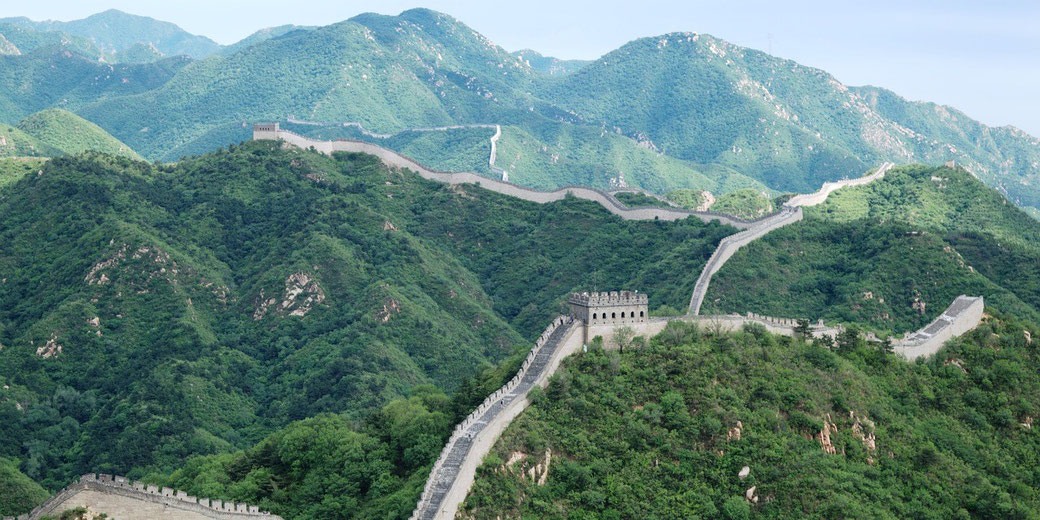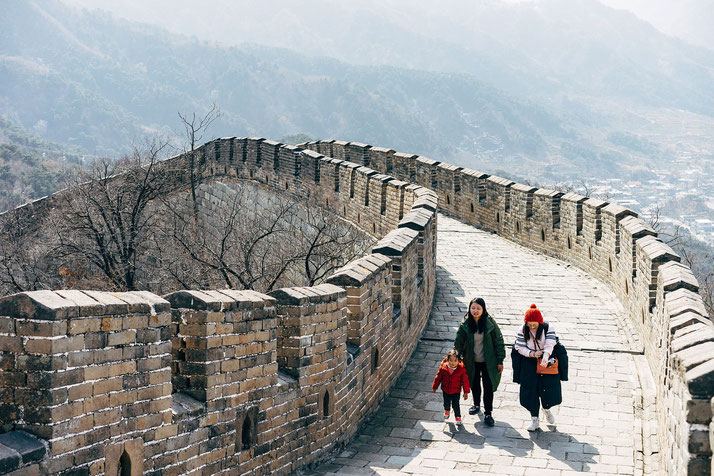Great Wall of China: A gruesome and incredible feat of engineering

The Great Wall of China is one of the most famous landmarks in the world for good reason. This amazing structure stretches over thousands of miles, and winds all manner of terrains, through mountains, valleys, and even deserts.
For centuries now, it has been a visible sign of China’s strength and its determination to protect its people from invaders.
However, the stories of how it was built and the many people who have fought along its walls make the Great Wall of China a surprisingly dark place to learn about.
What is the Great Wall of China?
The Great Wall of China spans 13,171 miles (21,196 km) and is made up of a series of walls and defensive works built by different Chinese ruling families over many centuries.
For most of its life, the wall was a form of military protection against invasions from the north.
As such, it was often treated as the divinely ordained edge of the Chinese Empire.
It was originally started during the 7th century BC, when a number of small kingdoms in northern China built their own separate walls to guard against raids by nomadic tribes.
It wasn’t until the first emperor of China, Qin Shi Huang, that they were finally connected together in the 3rd century BC.
To join these earlier regional walls into a unified structure, he ordered new stretches of earthen mounds to be built, that were to be reinforced with wooden poles and packed earth.
When completed, the Qin dynasty’s wall measured 3,100 miles (5,000 km): much shorter than the classic stone wall we are familiar with today.
Regardless, it would have made a strong impression on those who were seeing for the first time.
During the Han Dynasty
The next series of building projects on the wall took place under the Han dynasty (206 BC to AD 220).
In particular, even further sections of packed earth and stone were added. This time, it was to secure China’s northern borders against raids by the Xiongnu, another nomadic horse tribe.
By this point, the wall now reached west to Dunhuang, which helped China control the Hexi Corridor, which was an important part of the lucrative Silk Road trade route.
During the Ming Dynasty
The best-known part of the Great Wall was finally built during the Ming dynasty, from the 14th to the 17th centuries and is the most complete part of the structure today.
Technology had developed over the centuries, and the new builders used bricks and stone to create a much strong defence against invaders.
This time, it was the Mongols and later the Jurchens who were the primary concern.
In total, they added over 25,000 watchtowers and reached almost the maximum extent it would ever be.
In addition, the Ming dynasty used the wall as a manage to manage the movement of people and goods into the empire.
Why has it been called the 'long graveyard'?
The Great Wall of China has an eerie nickname: the 'long graveyard'. It comes from the fact that the process of building the wall was such a major task, and took millions of workers over hundreds of years to complete, including peasants, criminals, and even prisoners of war, that many of them died from exhaustion, starvation, and disease on site.
In particular, the extreme weather at different places along the wall, from heat to cold, was a catalyst of many more deaths than were expected by the imperial government.
Modern estimates suggest that about 400,000 of the people who built the wall died.
That is not to forget that there were also soldiers who defended it in various conflicts over the centuries would have also died.
The soldiers posted there had to face the same severe weather conditions, along with poor sanitation, and limited supplies of food and water.
For those who didn’t die from the environment or illness, would have usually succumbed to wounds received in battles since they were so far from civilisation.
How effective was the Great Wall at preventing invasions?
As impressive as the wall is, with its countless guard towers tremendous height, it did not stop all invasions.
For example, in the 2nd century BC, the Xiongnu broke through and invaded China.
Later, in the 13th century, Genghis Khan's Mongols simply went around the end wall, marched into the centre of China, and set up the Yuan dynasty.
In 1644 the Manchus passed through Shanhai Pass with help from the Ming general Wu Sangui who betrayed his emperor.
This led to the fall of the Ming dynasty and the start of the Qing dynasty (1644–1912).
So, while the wall offered some protection, it was certainly not unbeatable: invaders were always looking to find weak spots.

More Ancient China
What do you need help with?
Download ready-to-use digital learning resources
Copyright © History Skills 2014-2025.
Contact via email
With the exception of links to external sites, some historical sources and extracts from specific publications, all content on this website is copyrighted by History Skills. This content may not be copied, republished or redistributed without written permission from the website creator. Please use the Contact page to obtain relevant permission.





